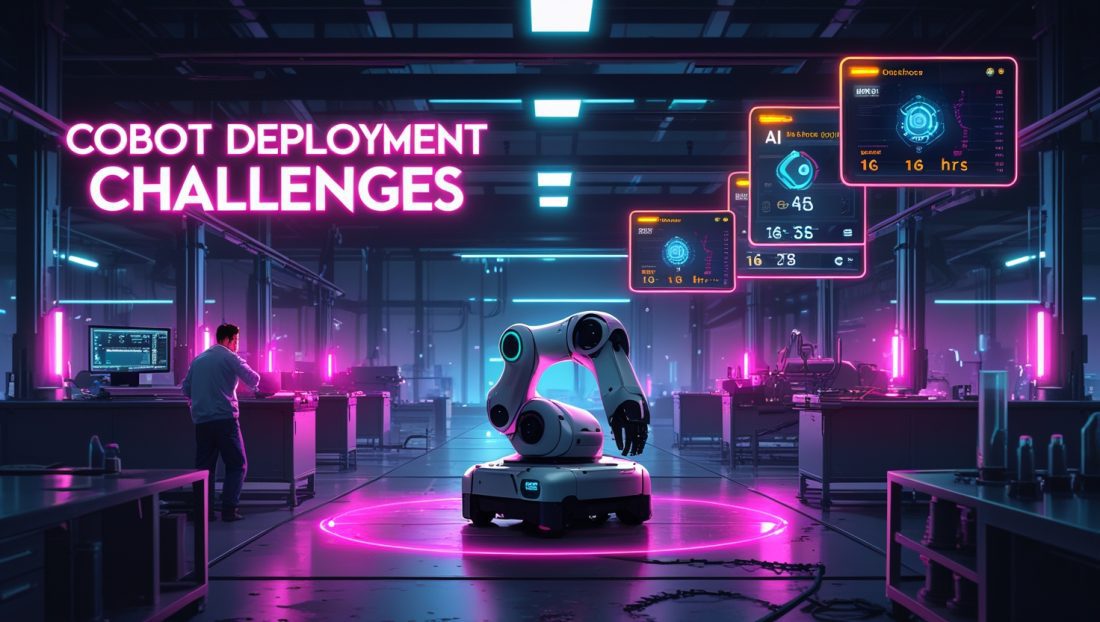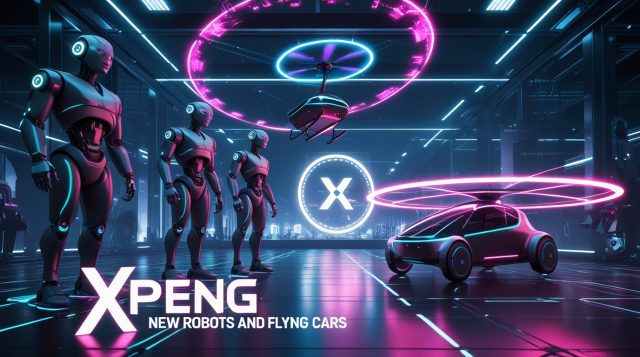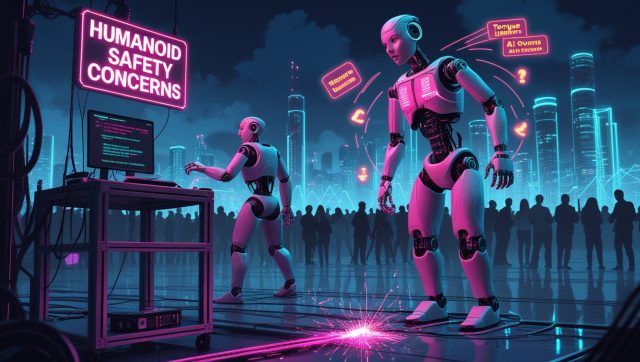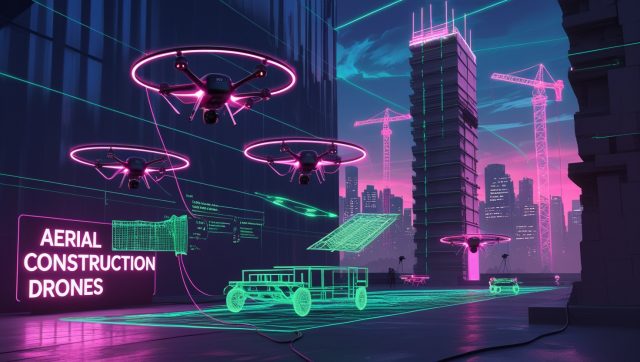Industrial robotics faces a silent productivity crisis: despite massive investments, most collaborative robots never reach their full operational potential due to persistent cobot deployment challenges.
The manufacturing floor at Mechatron Solutions (name changed) buzzed with anticipation when their first collaborative robots arrived. Engineers envisioned 24/7 productivity – cobots seamlessly handing off tasks between shifts, eliminating bottlenecks, and boosting output. Fast forward twelve months, and those same cobots sat idle for 16 hours daily. “We spent six figures on automation that operates like a part-time employee,” confessed their frustrated operations lead. This isn’t an anomaly. Industry data reveals 58% of cobots never achieve full multi-shift deployment, trapped in pilot purgatory despite promises of flexible automation.
The Multi-Shift Deployment Crisis: Quantifying the Gap
Collaborative robots (cobots) represent 10.5% of global industrial robot installations – approximately 56,836 units in 2023 alone. Their value proposition is compelling: easy programming, lower costs, and safe human collaboration. Yet beneath surface-level adoption lies a stark utilization gap:
- 42% of cobots operate across 2-3 shifts daily
- 58% remain confined to single-shift or partial deployment
- SME implementation lags 30% behind large enterprises due to integration complexity
This deployment failure represents a $3.2 billion productivity leak annually based on average cobot prices and projected ROI shortfalls. To understand how leading firms are tackling this gap, companies like Siemens are leveraging advanced solutions, such as those explored in how industrial AI agents slash energy costs in manufacturing in 2025, which highlights AI-driven strategies to optimize automation efficiency across shifts.
Technical Roadblocks: Why Cobots Stall at Scale
1. Workflow Integration Failures
Most cobots are installed as isolated point solutions rather than integrated components of production. The 2024 SESTOSENSO project across European manufacturers revealed that 67% of cobots lacked interoperability with legacy machinery and control systems. Without digital thread connectivity:
- Production schedulers cannot coordinate handoffs between shifts
- Quality data resides in silos
- Maintenance becomes reactive
“We programmed our cobot for perfect pick-and-place operations, but it couldn’t tell our MES when it completed a batch. Night shifts couldn’t leverage it without manual oversight,” shared an automotive Tier 1 supplier engineer. For deeper insights into overcoming these integration challenges, the International Federation of Robotics provides comprehensive reports on global cobot adoption trends, highlighting interoperability as a critical barrier.
2. Artificial Intelligence’s “Last Yard” Problem
While modern cobots feature reinforcement learning and computer vision, their contextual awareness falters in dynamic multi-shift environments:
- Lighting variations between day/night shifts degrade vision system accuracy
- Tool wear compensation requires manual recalibration
- Part variability (e.g., agricultural products) triggers fault states
A 2025 study in Processes confirmed AI-driven cobots achieve 30% lower autonomy in third-shift operations versus first-shift baseline performance. Innovations like computer vision robotics advancements in 2025 are addressing these issues by enhancing defect detection and adaptability, crucial for multi-shift reliability.
3. Payload/Speed Tradeoffs
Cobot safety features inherently limit performance:
| Parameter | Traditional Robot | Collaborative Cobot |
|---|---|---|
| Max Payload | 500kg+ | <15kg (87% of models) |
| Operating Speed | 2-4 m/s | 0.3-1 m/s |
| Duty Cycle | 95%+ | 65-80% (shared cells) |
These constraints create throughput ceilings where adding shifts yields diminishing returns.
Organizational Barriers: Overcoming Cobot Deployment Challenges
1. Dynamic Capability Deficits
Research in the Journal of Manufacturing Systems reveals successful cobot scaling requires three organizational muscles:
- Sensing: Identifying process bottlenecks cobots solve
- Seizing: Rapid pilot deployment
- Transforming: Workforce restructuring for multi-shift utilization
Firms mastering all three see 4.2x higher cobot utilization. Others stall after seizing. To dive deeper into how factories are overcoming these barriers, why industrial AI implementation wins big in 2025 factories offers actionable strategies for aligning organizational capabilities with automation goals.
2. Workforce Architecture Misalignment
“Our operators loved the first cobot – until they realized it worked three shifts without breaks,” shared a Dutch logistics manager. Key friction points:
- Skill Gaps: 78% of maintenance teams lack cross-training for cobot diagnostics
- Compression: 12-hour cobot runtime compressed into 8-hour human shifts
- Shift Handoff Failures: Critical calibration knowledge isn’t transferred
Warehousing studies show cobot idle time increases 23% during shift transitions without structured handoff protocols. For a broader perspective, IndustryWeek explores workforce training trends that address these skill gaps in modern manufacturing.
3. The Phantom ROI Calculation
Companies frequently underestimate their true costs:
Total Cost of Ownership = (Hardware + Software) + (Integration + Workflow Redesign) + (Shift Training × 3) + (Downtime Buffer).
Most calculations, however, omit reconfiguration labor and cross-shift coordination. Actual payback periods average 5.1 years versus projected 2.3 years.
Human Factors: The Soft Underbelly of Deployment
1. Trust Deficits Across Shifts
Frontline operators show measurable trust variation:
- Day shift: Initial optimism (avg. trust score: 7.2/10)
- Night shift: Skepticism due to reduced technical support (trust score: 4.1/10)
University of Bologna researchers found unexplained cobot pauses during night operations reduced perceived reliability 37% more than identical daytime stoppages.
2. Safety Perception Gaps
Despite ISO/TS 15066 compliance, risk perception varies dramatically:
- Engineering teams: Focus on force/torque safety metrics
- Operators: Fear “blind spots” in shared workspaces
- Night shifts: Worry about reduced supervision
This creates self-limiting utilization: workers avoid cobot collaboration during perceived “high-risk” hours.
3. Job Identity Threats
A 2025 IFR study revealed unaddressed anxieties: “They call it ‘collaboration’, but I see my replacement working the graveyard shift,” shared an assembly technician. Without clear reskilling pathways, operators subtly undermine multi-shift cobot integration through:
- Process variation withholding
- Diagnostic information hoarding
- Preventive maintenance avoidance
The Path to Multi-Shift Maturity: Industrial AI-Driven Solutions
1. Context-Aware Cobot Architecture
Leading firms embed three-layer intelligence:
- Edge Perception: LiDAR + thermal imaging for shift-invariant sensing
- Digital Twin Integration: Real-time synchronization with virtual models
- Autonomous Recovery: Self-correction for 73% of common faults
Example: BMW’s Spartanburg plant uses shift-specific digital twin profiles to auto-adjust lighting and tolerance parameters, enabling consistent 3-shift precision.
2. Adaptive Workforce Orchestration
“Stop scheduling humans around machines. Schedule cobots around human value,” argues MIT’s Dr. Elena Petrova. Proven models include:
- Cobot Pacing Algorithms: Sync robot cycle times with human cognitive load
- Cross-Shift “Cobot Champion” Programs: Paid expertise premiums for knowledge transfer
- Ergonomic Handoff Protocols: Standardized calibration verification
Siemens’ implementation roadmap reduced cobot shift transition downtime by 54% in 6 months.
3. Industrial AI That Elevates Human Work
Breakthrough solutions focus on augmenting irreplaceable human skills:
- Predictive Context Handoff: Cobots prep tools/materials for next shift during idle periods
- Skill Amplification: AR interfaces guide night operators through complex cobot-assisted repairs
- Autonomous Reconfiguration: Self-adjusting fixtures for product changeovers
“The cobot that adapts to night shift’s rhythm earns its keep. Rigid ones become museum pieces,” shared a Fanuc Industrial AI Lead.
Transforming Deployment Failures into Multi-Shift Assets
The 58% deployment gap represents not failure, but unmined potential. Organizations cracking the multi-shift code share three traits:
- Treat cobots as shift employees – with onboarding, schedules, and performance reviews
- Implement “Cobot Utilization” KPIs – tracking cross-shift OEE separately from humans
- Budget for perpetual recalibration – accepting that environments evolve across shifts
Global electronics supplier Flex reduced cobot idle time by 68% after introducing:
- Shift-Specific Digital Twins
- Cobot Cross-Training Certifications
- AI-Driven “Takeover Alerts” for abnormal events
The future belongs to cobots that work like the best human team members: learning from day shift, supporting night shift, and improving continuously. With Industrial AI finally bridging the context awareness gap, the next deployment wave will transform factories from automated to adaptable.
Final Intelligence: Success requires moving beyond technical specs to orchestrate socio-technical systems. The cobot that pauses mid-task isn’t faulty – it’s waiting for human wisdom. The plants winning this integration race treat collaboration as a three-shift conversation, not a technology installation.



